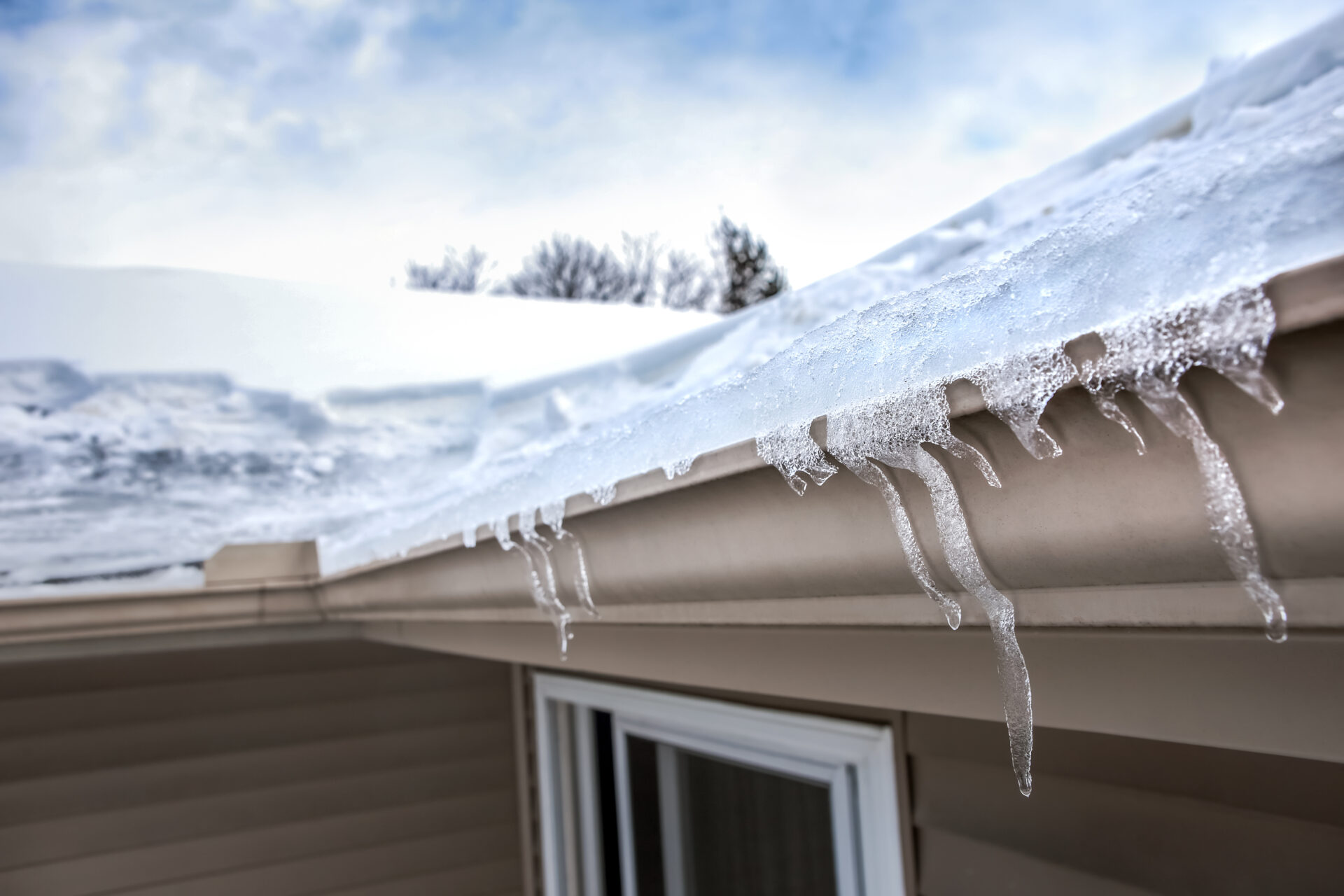 The short answer, no. With the proper gutter protection you should never have to remove your gutter guards.
The short answer, no. With the proper gutter protection you should never have to remove your gutter guards.
Gutter guards protect your home from all types of weather and debris. As fall ends and winter approaches, what does this mean for your gutters? A frequent question among homeowners is whether they should remove their gutter protection or keep it installed during the winter months. Depending on the climate of where you live, there are a few pros of leaving your gutter protection up during the winter.
Pros of gutter protection in the winter
In the winter leaves, twigs and debris still find a way into your gutter system, so installing guards can prevent clogs throughout the cold seasons. Gutter guards are a preventive measure for ice dams, but it’s not foolproof. Ice dams are not a result of gutter guards, clogged and overflowing gutters with no ventilation are—the accumulation of freezing weather, heat loss and poor ventilation cause ice dams to form.
Your gutter protection is vital in the winter because it allows snow and ice to filter through faster. Gutter eaves do not have a filter or screen that allows snow or ice to melt and drain away. If you remove your gutter guards in the winter, come springtime there is melted snow, ice and spring showers, but no protection on your home. This can cause basement flooding and damage to your roof, landscape and foundation.
Cons of gutter protection in the winter
As mentioned before, debris can clog your gutters during the winter seasons. With clogs comes a bigger mess because the snow or melted ice has nowhere to escape. Instead, it all accumulates inside the gutters which forms ice dams and dangerous icicles. To prevent this, it’s important to clean debris off of your gutter protection before the winter season. Some gutter protection is maintenance-free and might only need leaves blown off the top or nothing at all. Another con of gutter guards in the winter is the weight of the snow and ice on your home. Excess weight can cause your gutters to sag or even pull away from your home.
Winterizing your home for the snowy season
With all these things in mind, it’s a great idea to prepare your gutters for the winter. Here are a few steps to minimize ice dam formation:
- Clean your gutters before winter to ensure there will be no clogs or blockage from debris. Clogged gutters cause still water that turns to ice in winter, adding weight to your gutters.
- Consider adding additional ventilation to your roof to prevent heat loss and freezing of gutters.
- Brush snow off your gutters or gutter guards throughout the season to minimize the accumulation.
- Identify other methods of melting ice or snow on your gutters. For example, you can install heat tape or heating cables but there are drawbacks to this too. Heat cables cause electrical fires and are ineffective in regularly snowy climates.
- If your home is notorious for ice dams and icicles, you could consider alternative roof styles or materials to prevent the settling of snow and ice.
- Pour hot water onto the ice dams to melt them. Note: do not use ice melt on your roof or gutters, this can damage the material. If you do, consider placing the ice melt in a sock or stocking to prevent damage to the gutter or guard material.
Conclusion
Depending on where you live and how intense the winter weather is, there are a few choices for your home gutter guards. Gutter guards are great at blocking debris in all types of weather. If you have any additional questions or concerns, feel free to contact All American Gutter Protection today. We can assist with inquiries about gutter protection and identify the best course of action for your home, yes even in the winter.







